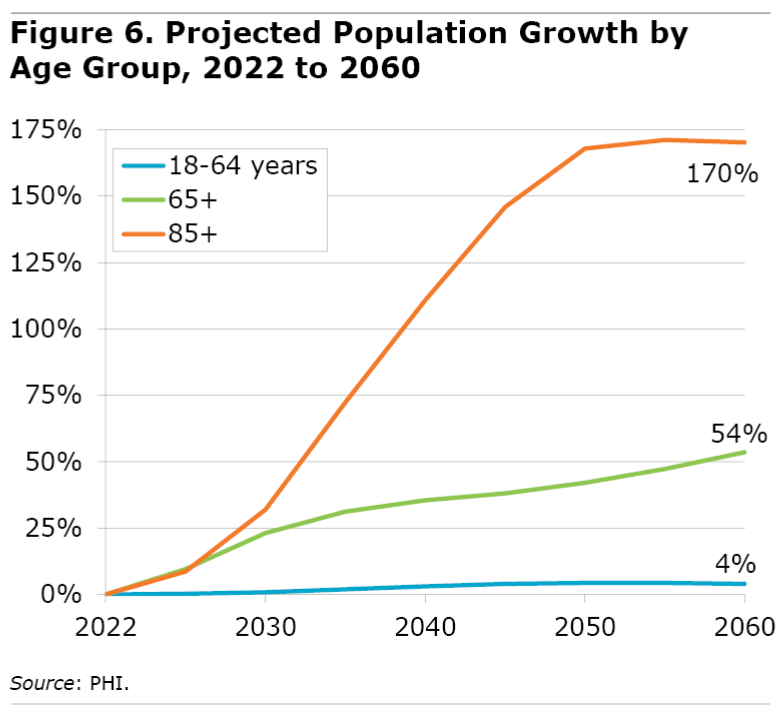Report Paints Picture of Care Workers in the United States – Center for Retirement Research

They are women, seniors, people of color and immigrants.
This post was written by Harry Margolis, a new contributor to the Squared Away Blog.
I’ve been sounding the alarm about the looming senior care crisis starting in about a decade when the oldest boomers start reaching their 80s. One of the biggest challenges will be the shortage of direct care workers.
PHI, a non-profit organization that supports direct care workers, recently released a report: Direct Care Workers in the United States: Key Facts 2024. Here are some of its results:
- There are 5 million direct care workers, including domestic workers (2.9 million), residential care aides (655,950), and nursing aides in nursing homes (458,590), representing 80 percent of the total (see Figure 1).
- The number has grown by about 1.6 million in the past decade from 3.5 million in 2014.
- It is expected to grow another 860,000 by 2032.
- Home care workers currently help more than 9.8 million seniors and people with disabilities living at home.
Low Pay
- Their average hourly wage was $16.72 in 2023 (see Figure 2).
- Because of the often part-time nature of direct care work, the median annual income is $25,015.
- Nearly half of direct care workers (49 percent) rely on public assistance such as Medicaid and SNAP benefits to survive.
- Because of the low compensation and high compensation of some entry-level jobs, there is a high turnover among direct care workers. As a result, the report indicates that there will be 8.9 million direct care job vacancies between 2022 and 2032.
Female, Elderly, People of Color
- 84 percent of domestic care workers are women (see Figure 3).
- 67 percent are people of color, although they make up only 38 percent of the US workforce (see Figure 4).
- Their median age is 47, and 36 percent are 55+ (see Figure 5).
- Immigrants make up 32 percent of the domestic workforce even though they make up only 17 percent of the US workforce.

Overall, the report tells us that we rely on low-wage workers, women, especially minorities and immigrants to care for our elderly and disabled citizens. As the demand for senior care grows, competition for other entry-level jobs such as fast food workers, cashiers, and stock and order fillers will continue to grow. Immigration policy will have a major impact on direct care workforce availability in the future.
Future Growth

I was pleased to see that the report included the projected growth of the 85+ population compared to the 65+ and 18-64 age groups (see Figure 6).
The 85+ population, and thus the need for aged care, will almost double between now and 2060. Most of this growth will occur between 2030 when the oldest baby boomers will be 84 and 2050 when the youngest will reach 86. In those twenty years it will be a difficult time for elderly care in the United States, as well as in other countries around the world.
For more from Harry Margolis, check out his Risking Old Age in America blog and podcast. He also answers consumer property planning questions on AskHarry.info. To stay updated on the Squared Away blog, join our free mailing list. You will receive one email each week.
Source link



